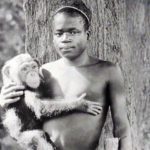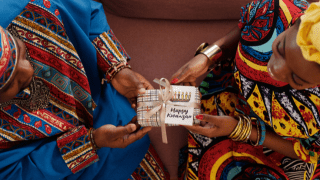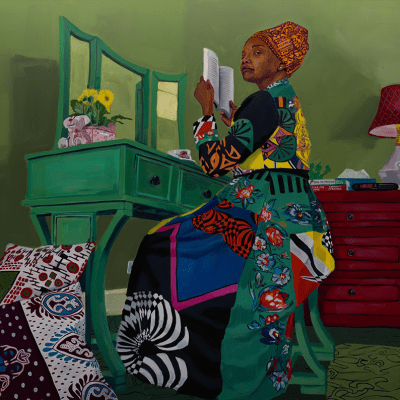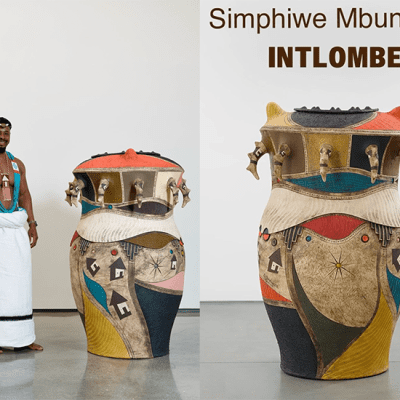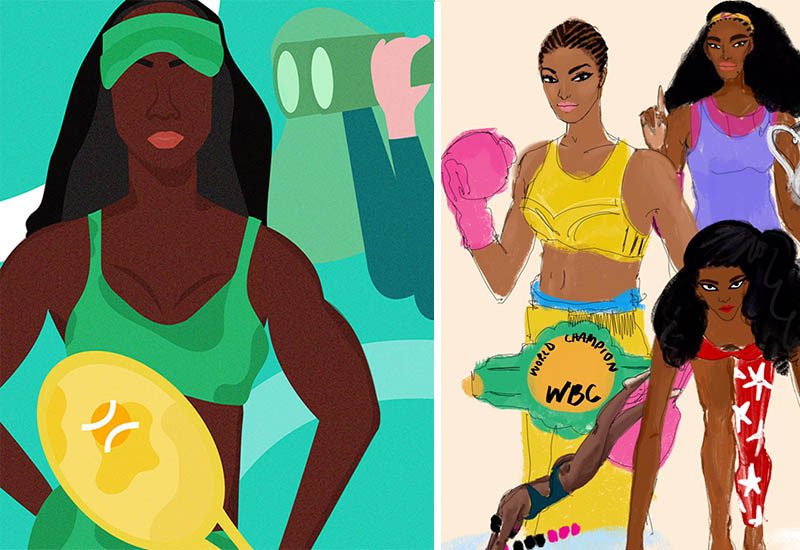
Recently, a study by the Morgan State University School of Global Journalism and Communication was done on the history of black women athletes. It examined how stereotypes and stigmas have affected their evolution throughout the decades. As part of the study, The Undefeated spoke with 13 female artists, who each offered a different perspective on how they interpret the rich and disturbed past of society’s treatment towards the black female athlete, and how it still continues today. Here, we chose five artists to feature who are telling significant stories through their work.
Laci Jordan
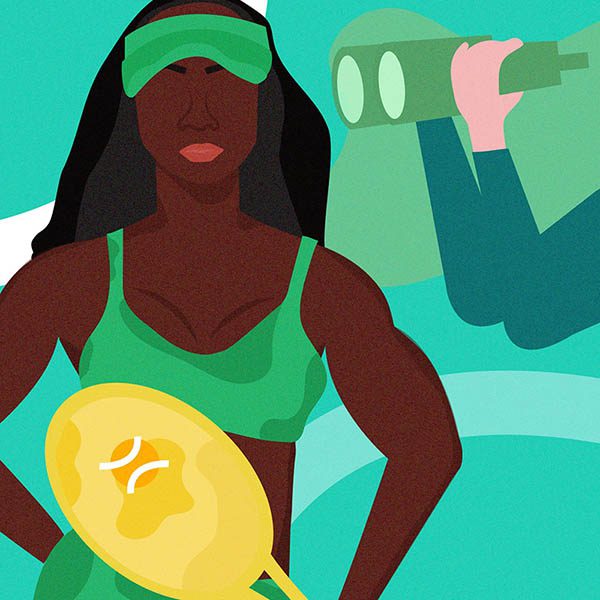
solacilike.com
“This piece is inspired by the story of Saartjie “Sarah” Baartman. Baartman was a South African woman who was exhibited because of her large buttocks as an attraction for Europeans in the 1800s. Fast-forward to the present day and the bodies of black women continue to be criticized, ridiculed and sought after for amusement. Black athletes are commonly critiqued for their muscular physiques and are forced to live in the intersection of sexism and racism. The illustration shows a Serena-inspired woman with an athletic build along with a spectator in the background. It implies the idea of viewing black women’s bodies as “attractions.” While the woman is being viewed for amusement, there’s an emphasis on her size in the frame, highlighting the power of the black female form.”
Anjelica Roselyn
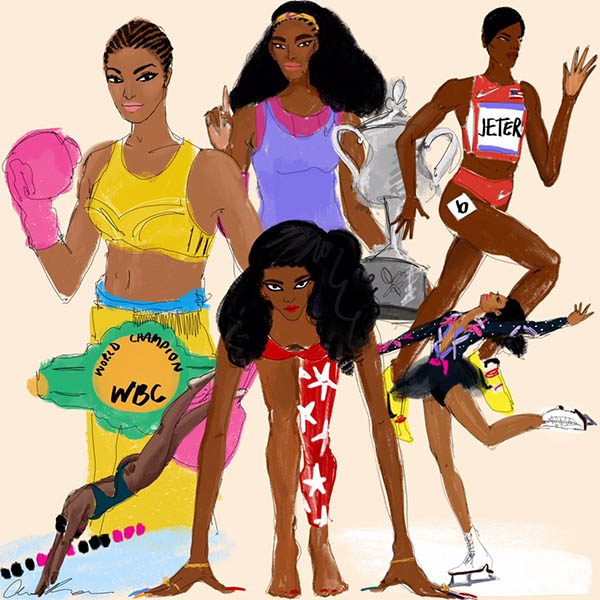
anjelicaroselyn.com
“The collage is an array of successful black women across the black rainbow with different abilities, different physiques and different strengths, in strong and determined poses. As a black woman myself, what I believe needs to be put across through my artwork, and what the media often omits, is the determination of the black woman. The media often pits women against each other, so I have each drawing of the women in this montage bleed into each other slightly, as a sign of unity. A young black girl can look at this piece and see herself somewhere — and see a winner.”
Sha’Tori Graham
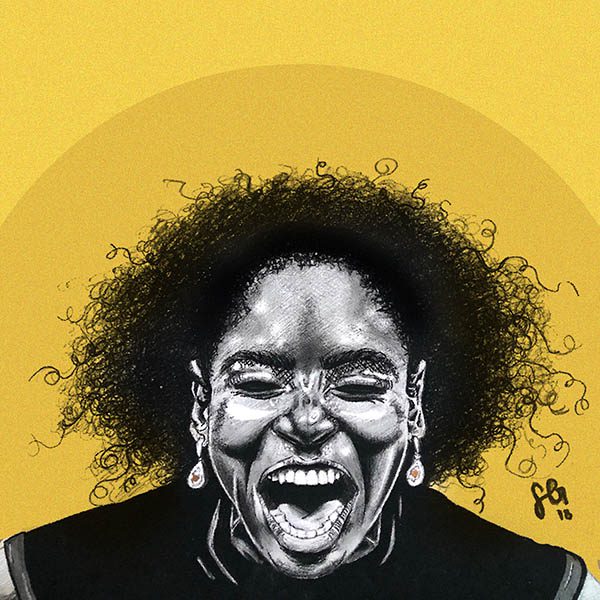
instagram.com/_ohshat/
“Throughout history, African-American women are constantly denigrated based on their physical appearance and how society misunderstands, ignores or fetishizes it. Even more so, women athletes undergo a severe amount of pressure to maintain an extremely fit body and to still present themselves as feminine. In this piece, I wanted to highlight Serena Williams’ face of victory. After most matches, she beams with joy and triumph, and I thought it was influential to showcase her widely known expression after winning her first official match at the BNP Paribas Open since giving birth to her daughter. It’s important to recognize the transition that women’s bodies undergo during and after pregnancy and the pressure there is to have a conditioned body. Serena is proving to be a powerful woman, both on and off the tennis court, and joy on an African-American woman’s face deserves to be showcased. Rather than choosing to fetishize, critique or shame the body of African-American women athletes, we should be celebrating women who acknowledge the tiers of their strength and transcend society’s opinion.”
Jerlyn Thomas
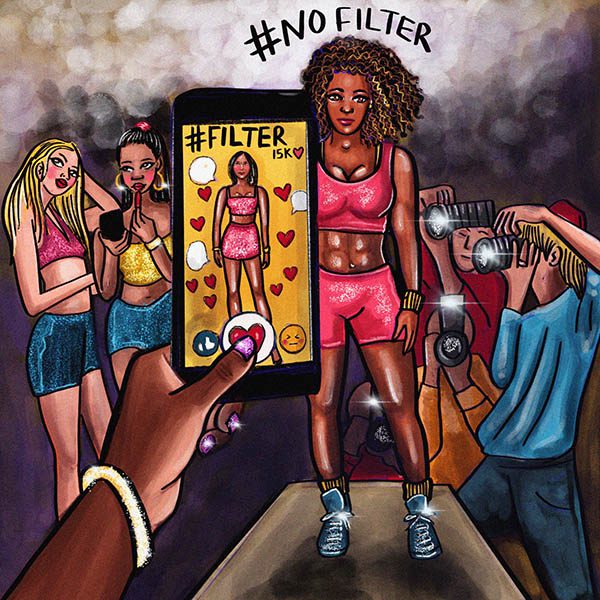
jerlynthomas.com
“My body has gone through various transformations since my early 20s, and while I was accepting everything it was doing, others around me were critiquing. I was called a man, asked to dress like a girl, be more feminine, and also to change my hair.
I have to admit that those comments hurt. I ignored them mostly because, at first glance, people don’t know that I’ve run 10 marathons and six ultramarathons. At one point, I was able to squat 315 pounds. I remember running my first marathon and a woman twice my size made it look effortless while I was struggling. I remembered thinking that I would love to know how she made it look so easy more than 20 miles in. I learned the value of training for those distances, which made me happy.
Being the body that others wanted didn’t make me happy. Now that I’m in my early 30s, I’m allowing my body to do what it wants. It took a while to achieve this mindset. It’s truly incredible what my body can do. Right now, I’m training for a half Ironman. While I get motivated by seeing fellow athletes training in their online highlight reels, it took me a while to focus on the unfiltered versions of true grit that make us what we are. I do realize that traditionally “pretty women” get the likes. However, I don’t think we are meant to be photoshopped to fit that criteria if we are not. While the media was teaching me to focus on their idea of beauty, I turned to incredible athletes like Serena Williams, who seems to constantly have to explain her existence, even if she’s arguably the greatest athlete of all time. To me, Serena demonstrates her femininity and also embraces what her body is doing. I’m doing the same.”
Melissa Kamba

instagram.com/tshikamba/
“My goal with this illustration was to demonstrate that women are strong and beautiful, despite the negative and demeaning opinions of media critiques and popular culture. In this illustration, I portrayed a strong athletic woman celebrating her victory in her natural state, with natural hair and no makeup. I used the orchid flowers around her to represent strength, beauty and graciousness. The color red serves as strength and passion. The gold accents embody her worth and success. Black women in general have to deal with much criticism and disapproval from the media and popular culture despite how well they perform athletically. Black women’s femininity is constantly questioned because of their looks and body types. They are called “masculine” or “gorilla” among other objectifying names, although their muscular builds are the reason they excel in their sport. You should not have to choose between being strong and being a woman. Black women need to stop being judged on their sexual appeal to others as part of their athletic talents.”
Read the full study at The Undefeated.




